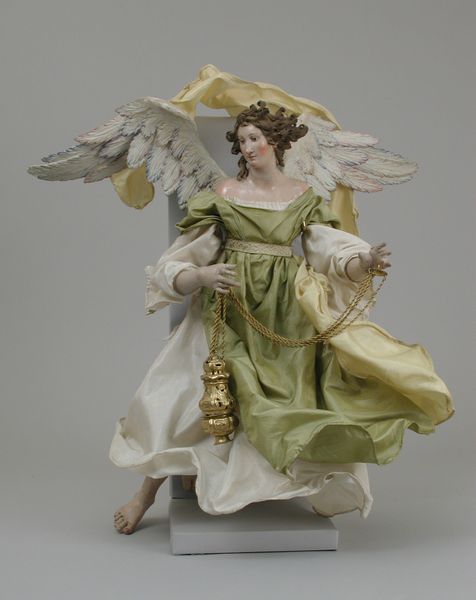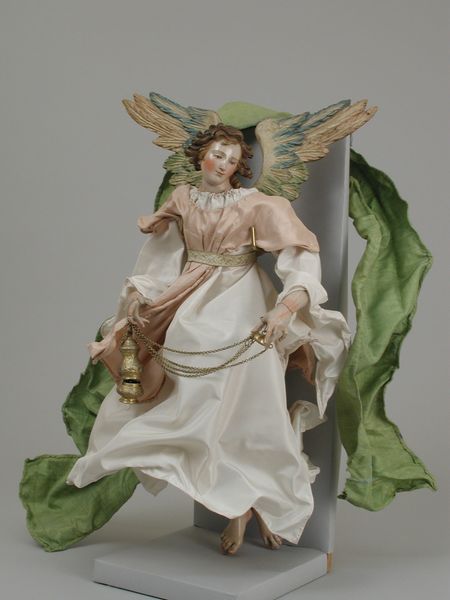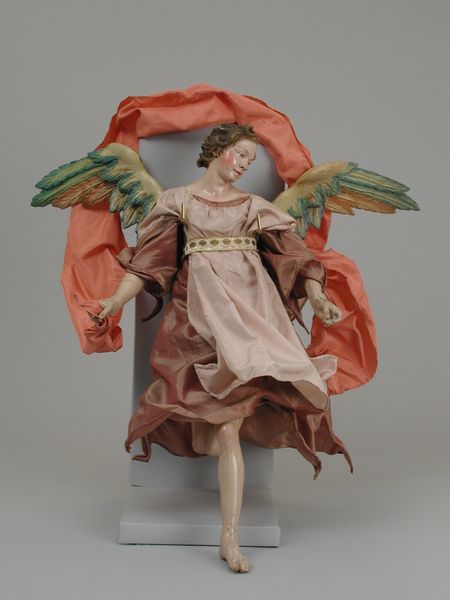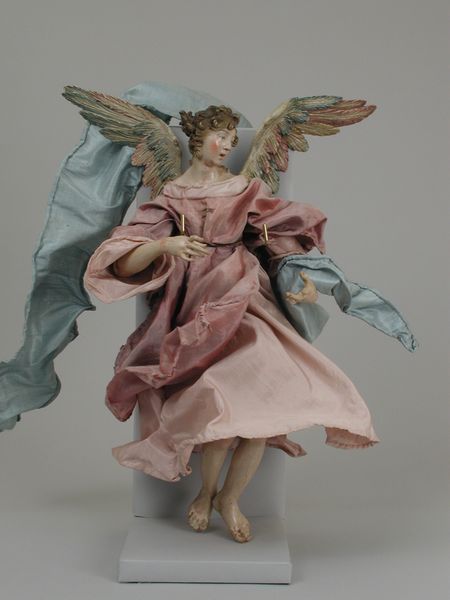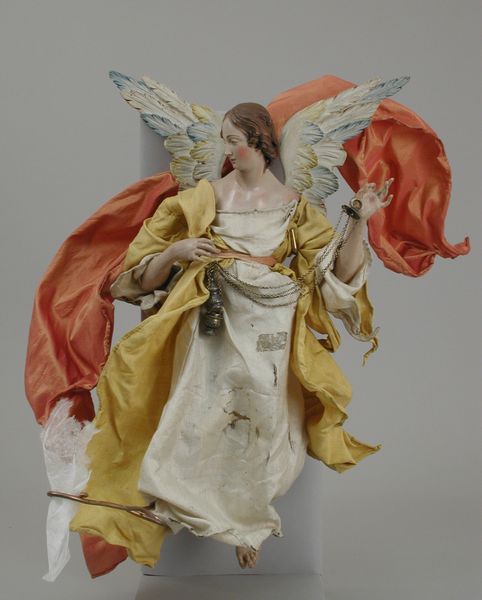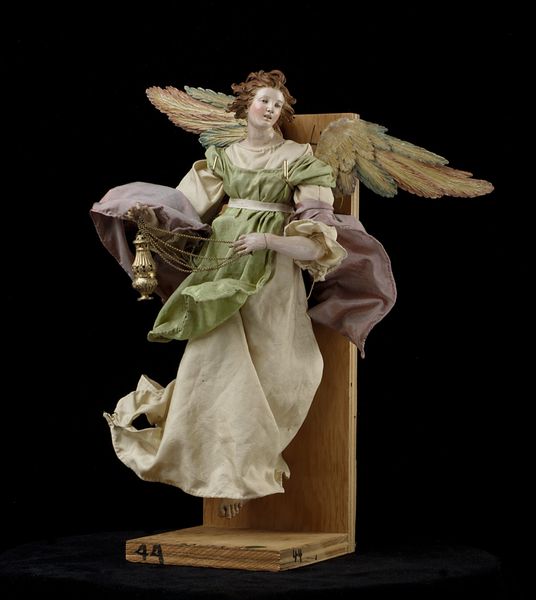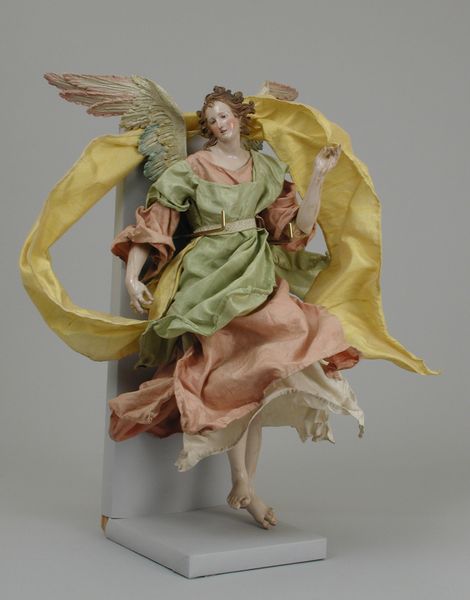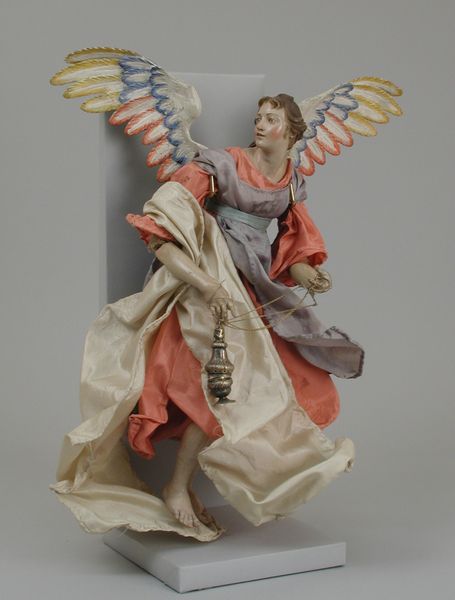
Dimensions: H. 15 1/2 in. (39.4 cm.)
Copyright: Public Domain
This Neapolitan Angel was made by Lorenzo Mosca in the 18th century with humble materials, including painted terracotta and fabric. Its material qualities have a profound effect on its appearance. Terracotta gives the angel a tangible, earthy presence. The painted details bring the figure to life, especially the flesh tones and the intricate feathering of its wings. Fabric is draped to create a dynamic sense of movement and texture, contributing to the sculpture's expressiveness. This kind of work belongs to a tradition of skilled craftsmanship, where techniques are passed down through generations. The act of molding clay, painting delicate features, and draping fabrics are all labor-intensive processes. The creation of such a piece speaks to broader social issues of labor, class, and consumption during this period. Paying close attention to the materials, processes, and cultural context of this artwork challenges us to reconsider the traditional hierarchy between fine art and craft.
Comments
No comments
Be the first to comment and join the conversation on the ultimate creative platform.
